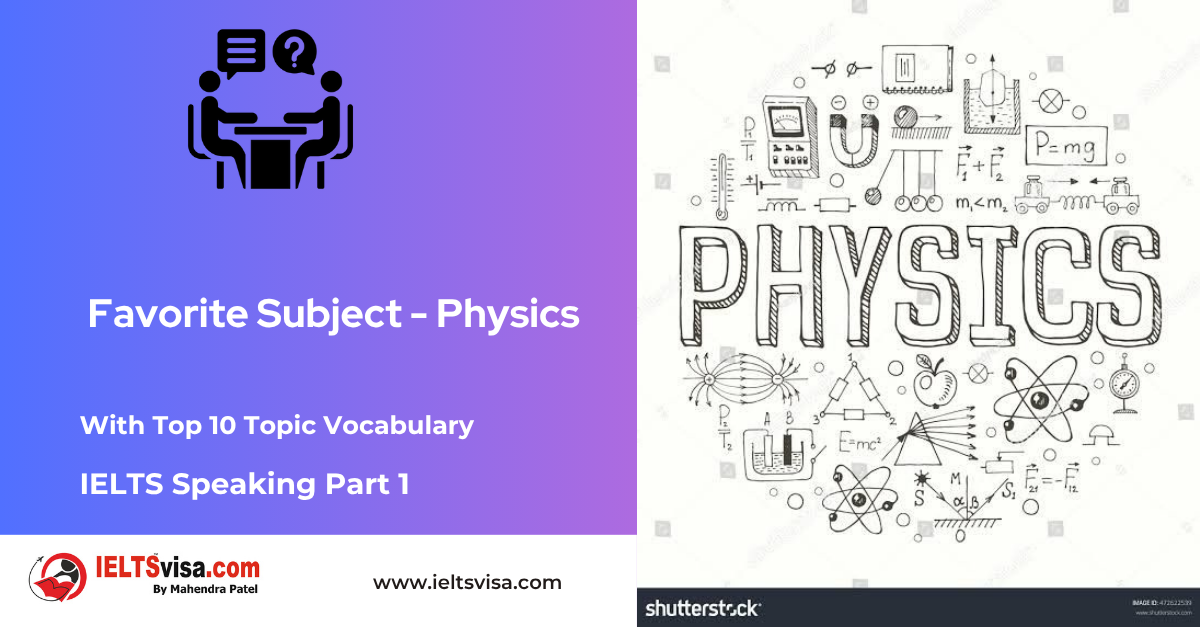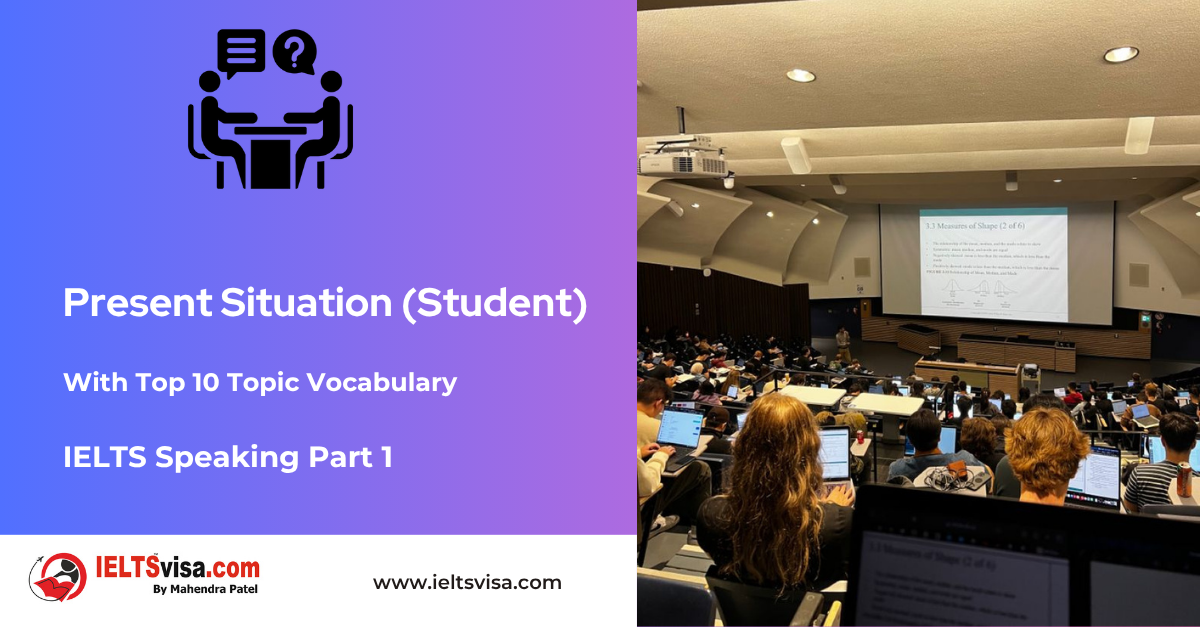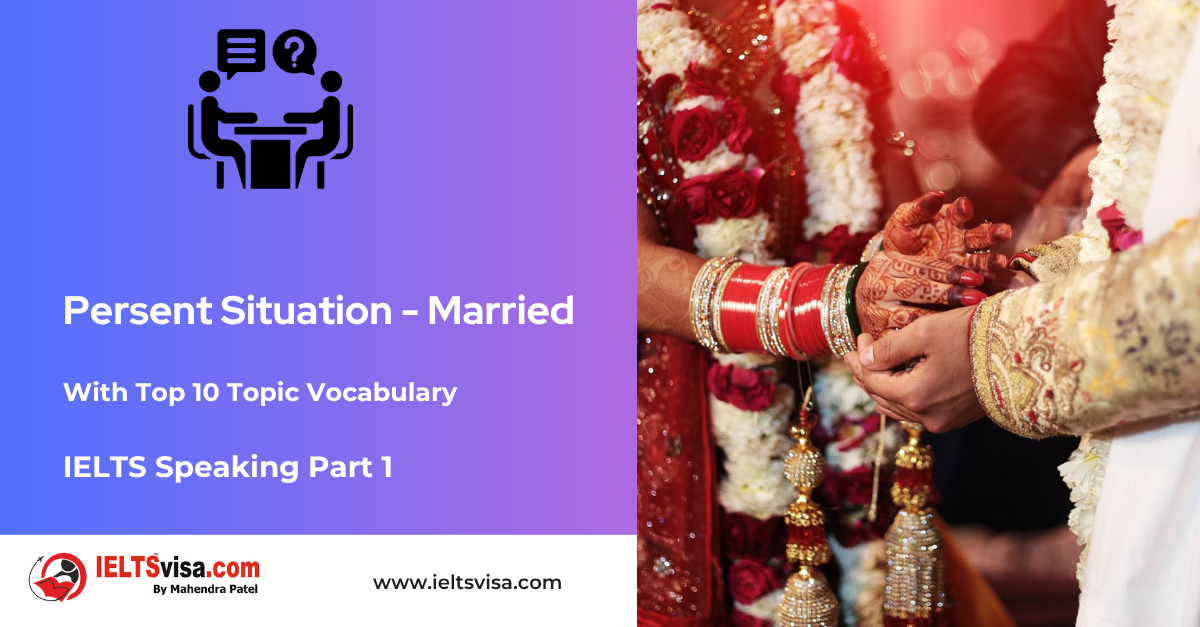Past
Grammar for IELTS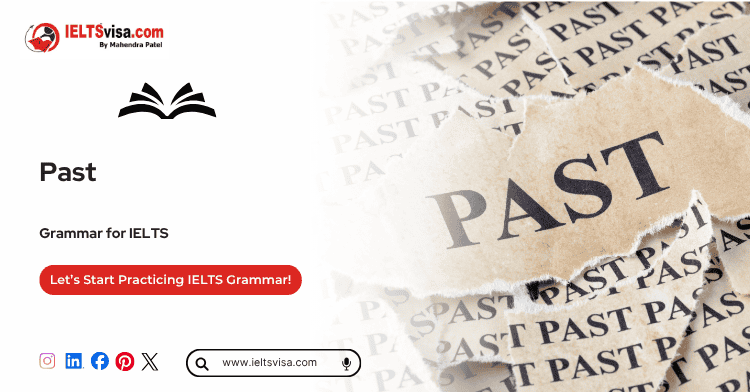
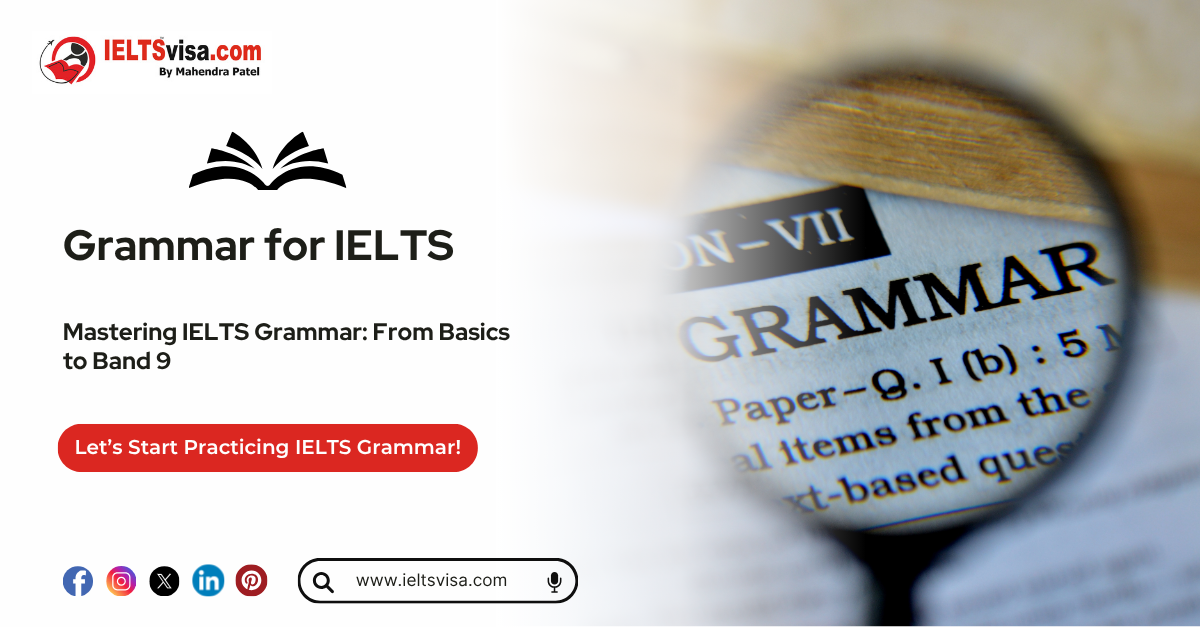
Past Tense in English Grammar
Understanding and using the Past Tense correctly is crucial for effective communication in English. It allows us to discuss actions or events that occurred before the present moment. This comprehensive guide covers all aspects of the past tense, including its types, rules, usage, and examples, making it easier for learners to grasp and use the past tense with confidence.
Table of Contents
1. Introduction to the Past Tense
2. Types of Past Tense
-
- Simple Past
- Past Continuous
- Past Perfect
- Past Perfect Continuous
3. Rules for Forming the Past Tense
4. Usage of Past Tense with Examples
5. Common Irregular Verbs in the Past Tense
6. Time Expressions Used in the Past Tense
7. Past Tense in Questions and Negatives
8. Differences Between Past Tense and Other Tenses
9. Common Mistakes in Using the Past Tense
10. Past Tense in Storytelling and Narration
11. Exercises and Practice Questions with Answers
12. Tips to Master the Past Tense
13. Frequently Asked Questions (FAQs)
14. Conclusion
1. Introduction to the Past Tense
The past tense is used to describe actions or events that occurred in the past. It is essential for recounting stories, sharing experiences, and explaining historical events. Whether you’re discussing yesterday’s activities or narrating a tale from long ago, the past tense is your go-to grammatical structure.
2. Types of Past Tense
A. Simple Past Tense
The simple past tense is used to describe completed actions that happened at a specific time in the past.
Structure:
-
-
-
- Positive: Subject + Verb (V2) + Object
- Negative: Subject + did not + Verb (V1) + Object
- Interrogative: Did + Subject + Verb (V1) + Object
-
-
Examples:
-
-
-
- I walked to the park.
- She did not attend the meeting.
- Did they enjoy the movie?0
-
-
B. Past Continuous Tense
The past continuous tense describes actions that were ongoing at a specific time in the past.
Structure:
-
-
-
- Positive: Subject + was/were + Verb (V1) + ing + Object
- Negative: Subject + was/were not + Verb (V1) + ing + Object
- Interrogative: Was/Were + Subject + Verb (V1) + ing + Object
-
-
Examples:
-
-
-
- He was reading a book when I arrived.
- They were not watching TV last night.
- Were you cooking dinner?
-
-
C. Past Perfect Tense
The past perfect tense is used to describe actions that were completed before another action in the past.
Structure:
-
-
-
- Positive: Subject + had + Verb (V3) + Object
- Negative: Subject + had not + Verb (V3) + Object
- Interrogative: Had + Subject + Verb (V3) + Object
-
-
Examples:
-
-
-
- She had left before I reached the station.
- We had not seen that movie before.
- Had they finished their homework?
-
-
D. Past Perfect Continuous Tense
The past perfect continuous tense emphasizes the duration of an action that was ongoing before another action in the past.
Structure:
-
-
-
- Positive: Subject + had been + Verb (V1) + ing + Object
- Negative: Subject + had not been + Verb (V1) + ing + Object
- Interrogative: Had + Subject + been + Verb (V1) + ing + Object
-
-
Examples:
-
-
-
- They had been studying for hours when the power went out.
- She had not been feeling well all day.
- Had he been working on the project for long?
-
-
3. Rules for Forming the Past Tense
Regular Verbs
Add -ed to the base form of the verb.
-
- Walk → Walked
- Play → Played
Irregular Verbs
Irregular verbs have unique past forms that do not follow a specific pattern.
-
- Go → Went
- Eat → Ate
Past Continuous Tense
Use was or were with the present participle (-ing form).
-
- She was singing.
- They were running.
Past Perfect Tense
Use had with the past participle (V3).
-
- I had seen the movie.
Past Perfect Continuous Tense
Use had been with the present participle (-ing form).
-
- They had been waiting.
4. Usage of Past Tense with Examples
|
Type |
Usage |
Example |
|
Simple Past |
Completed actions |
I watched a movie yesterday. |
|
Past Continuous |
Ongoing actions in the past |
He was writing a letter at 5 PM. |
|
Past Perfect |
Actions completed before another past action |
She had left before the rain started. |
|
Past Perfect Continuous |
Emphasizing the duration of past actions |
They had been practising for hours. |
5. Common Irregular Verbs in the Past Tense
|
Base Form |
Past Tense |
Past Participle |
|
Go |
Went |
Gone |
|
See |
Saw |
Seen |
|
Take |
Took |
Taken |
|
Write |
Wrote |
Written |
|
Drink |
Drank |
Drunk |
6. Time Expressions Used in the Past Tense
|
Type |
Examples |
|
Specific Time |
Yesterday, last week, in 1999 |
|
Duration |
For two hours, all day, during the summer |
|
Sequence |
Before, after, when, while |
7. Past Tense in Questions and Negatives
Questions
-
-
- Did she complete her homework?
- Was he sleeping when you called?
-
Negatives
-
-
- She did not finish her homework.
- They were not playing outside.
-
8. Differences Between Past Tense and Other Tenses
|
Aspect |
Past Tense |
Present Tense |
|
Time Reference |
Refers to past actions |
Refers to current actions |
|
Example (Simple) |
He walked to school. |
He walks to school. |
9. Common Mistakes in Using the Past Tense
Incorrect Verb Forms:
-
- Incorrect: He sended the email.
- Correct: He sent the email.
Mixing Tenses:
-
- Incorrect: She had gone to the store yesterday.
- Correct: She went to the store yesterday.
10. Past Tense in Storytelling and Narration
The past tense is crucial in storytelling, helping to set scenes and describe actions.
Example:
Once upon a time, a young boy lived in a small village. Every day, he worked in the fields and dreamed of adventure.
11. Exercises and Practice Questions with Answers
Exercise 1: Fill in the Blanks
1. She ___ (read) a book last night.
2. They ___ (not, finish) their homework.
3. ___ you ___ (watch) the match yesterday?
Answers:
1. read
2. did not finish
3. Did, watch
12. Tips to Master the Past Tense
1. Memorize Irregular Verbs: Create flashcards for irregular verbs.
2. Practice Regularly: Write stories or diary entries in the past tense.
3. Use Time Expressions: Include words like “yesterday” and “last week” to make sentences clearer.
Frequently Asked Questions (FAQs)
Q1: Can I use “was” with an action verb?
A: Yes, but only with the present participle (-ing form) for the past continuous tense.
Q2: What’s the difference between simple past and past perfect?
A: The simple past refers to completed actions, while the past perfect emphasises actions completed before another past action.

Our Books
Master IELTS Speaking Part 1
IELTS Writing Task 1 Book
IELTS Writing Task 2 Book
Practice IELTS Other Modules
IELTS Listening
The IELTS Listening test assesses how well you can understand spoken English in various contexts. It lasts about 30 minutes and is divided into four sections with a total of 40 questions. The listening tasks become increasingly difficult as the test progresses.
IELTS Academic Reading
The IELTS Academic Reading section assesses your ability to understand and interpret a variety of texts in academic settings. It is designed to evaluate a range of reading skills, including skimming for gist, reading for main ideas, reading for detail, understanding inferences, and recognizing a writer's opinions and arguments.
IELTS Speaking
The IELTS Speaking test assesses your ability to communicate in English on everyday topics. It lasts 11-14 minutes and consists of three parts: introduction, cue card, and a discussion based on the cue card topic.
IELTS General Reading
IELTS General Reading tests your ability to understand and interpret various types of texts. Here are some key areas and types of content you can expect to encounter in the reading section, along with tips for effective preparation.
IELTS Academic Writing Task 1
In IELTS Academic Writing Task 1, you are presented with a visual representation of information, such as graphs, charts, tables, or diagrams, and you are required to summarize, compare, or explain the data in your own words.
IELTS General Writing Task 1
In IELTS General Writing Task 1, you are required to write a letter based on a given situation. The letter can be formal, semi-formal, or informal, depending on the prompt. Here’s a breakdown of the key components to include in your letter
IELTS Academic Writing Task 2
In IELTS Academic Writing Task 2, you are required to write an essay in response to a question or topic. Here’s a guide to help you understand the essential elements of this task
IELTS Exam Tips
To succeed in the IELTS exam, practice regularly, familiarize yourself with the test format, improve your vocabulary, develop time management skills, and take mock tests to build confidence.
Grammer for IELTS
Grammar is the foundation of effective communication in English. Understanding tense usage, subject-verb agreement, and sentence structure enhances clarity and coherence in writing and speaking.
Vocabulary for IELTS
Vocabulary plays a crucial role in the IELTS (International English Language Testing System) exam, especially in the Speaking and Writing sections. Here’s an overview of why vocabulary is important and how it impacts your performance
RECENT IELTS SAMPLES QUESTIONS AND ANSWERS
IELTS Speaking Part 1 – Favourite Sujbect – Physics
IELTS Speaking Part 1 - Favourite Sujbect - Physics Q: What is your favourite subject? A: My favourite subject...
IELTS Speaking Part 1 – Present Situation (Student)
IELTS Speaking Part 1 - Present Situation (Student) Q1: Are you a student or do you work?A: I’m a full-time...
IELTS Speaking Part 1 – Present Situation – Employee – as an International Student and Social Worker
IELTS Speaking Part 1 - Present Situation - Employee - as an International Student and Social Worker Q1: Are...
IELTS Speaking Part 1 – Persent Situation – Employee- as an Electric Engineer
IELTS Speaking Part 1 - Persent Situation - Employee- as an Electric Engineer Q1: What do you do for a...
IELTS Speaking Part 1 – Persent Situation – Employee – as an Software Engineer
IELTS Speaking Part 1 - Persent Situation - Employee - as an Software Engineer Q1: What do you do for a...
IELTS Speaking Part 1 – Persent Situation – Married
IELTS Speaking Part 1 - Persent Situation - Married Q1: Are you married?A: Yes, I am married. My spouse and I...

